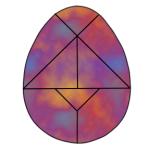The Distributive Property
Introduction to the distributive property of arithmetic should only be ventured upon, once the Commutative Property is fully understood.
When we discuss the distributive property in basic arithmetic, or further on in Basic Algebra, we refer to problems which contain both Addition and Multiplication.
When we have a group of numbers to be added together, that must then all be multiplied by another number - the multiplication distributes itself across ALL the numbers to be added.
(Remember here, when we subtract - we are simply 'adding' a negative number!)
Worked Example of the Distributive Property
 |
 |
We can of course explore this with specific numbers to see if it holds true. We will use the example of 2(6 + 3).

Since both methods result in the same answer, we have shown that the Distributive property (in this case) in indeed true.
Your child must understand the Distributive Property and the other properties of arithmetic if they want to enjoy (yes enjoy!) Basic Algebra!
Keep In Touch!
You can send me a quick message, subscribe to K6Math Fun & Update, or join my Facebook Page - K6Math. Choose all the options so you don't miss any of the new material added to this site.






